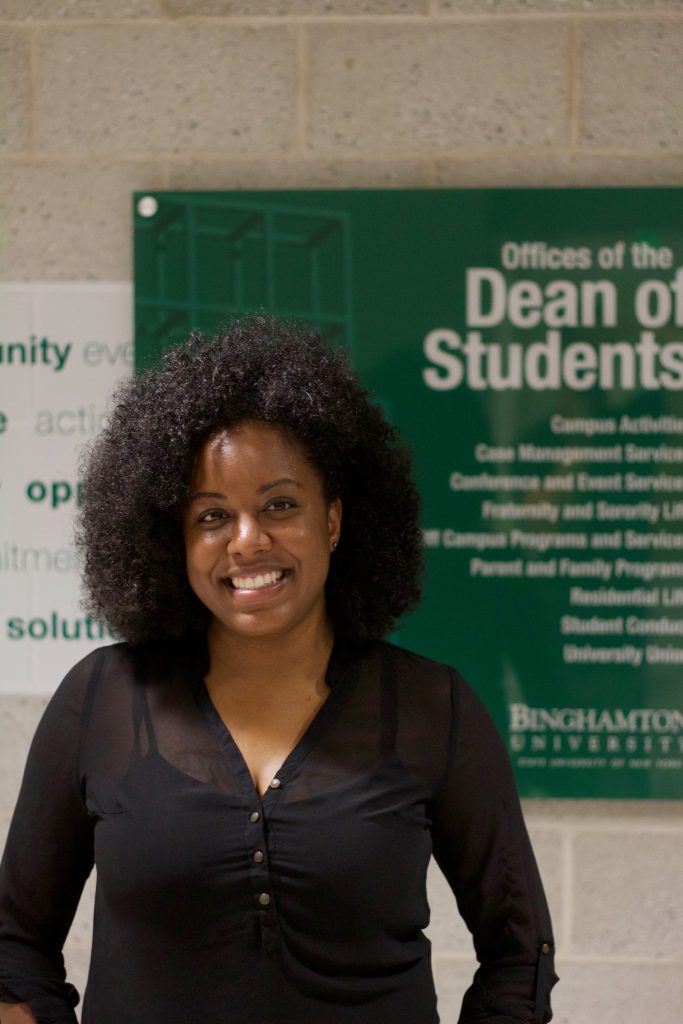
A quarrel between roommates, an offensive or discriminatory remark from a classmate and anything that needs mediation from a third party can now receive help from the new Student Conflict and Dispute Management Program.
Jazell Johnson, the program director and the assistant director of case management and budgeting, said that this program is for incidents that do not necessarily violate the code of conduct, but still negatively affect students. Conflicts are settled through mediation with a trained faculty member, with an emphasis on creating productive conversation and effectively solving disputes.
“We’ve had some issues in the past where students have encountered issues on campus that may not have broken the code of conduct, but that doesn’t necessarily mean that it didn’t cause some type of harm,” Johnson said. “Prior to this program, if it didn’t break the code of conduct there was very little that could be done.”
According to Johnson, this program was created because of past suggestions students made about conflict being handled on campus, including the demands made by Students for Change in 2015. This prompted faculty from the Dean of Students, the division of diversity, equity and inclusion and other offices to create a program that would help with resolution.
If a conflict arises and a student wishes to pursue the student conflict and dispute management program, they have to complete a dispute form that will be available online. The form includes basic information as well as the contact information of all parties included in the conflict.
After the office reviews the form, they will contact the parties involved and ask if they want to participate in a meeting to help resolve the conflict. The meeting will be mediated by a faculty or staff member involved with the program, all of whom have undergone an 80-hour training session, and will either center around mediation or restorative justice.
According to April Thompson, the associate vice president and dean of students, mediation is about creating dialogue between students who wish to resolve conflicts with one another, while restorative justice is about repairing any harm that has been done to an individual or community. Instead of punishing someone, it’s a way to make sure they understand the harm they did and learn from it in the hopes of not repeating the action.
Nicole Sirju-Johnson, the associate chief diversity officer and director of the Multicultural Resource Center, underwent the training. She said that the idea of dialogue creates a more understanding environment that also sets Binghamton University apart from other institutions in that it gives students more options when dealing with issues.
“It is a more welcoming environment and it will provide an educational experience that you can’t find at other places,” Sirju-Johnson said.
Sirju-Johnson said that the program is not necessarily about one person being right, but rather an opportunity to facilitate a conversation.
“Even if you are fully in the right, there is always more than one way to handle that,” Sirju-Johnson said. “Can you turn being right into a teachable moment? Absolutely. Being right is not enough, so if you respond to something in the wrong way can you do further damage? Absolutely.”
Faculty from the Dean of Students Office, code of conduct and other offices were a part of the implementation team. A student committee, formed specifically for this purpose, was also involved and helped advise faculty and staff on what students would want out of the program.
While there are no trained student mediators at the moment, Johnson said that she wants to eventually include students in that aspect of the program. She also mentioned the possibility of having student interns this semester to work on marketing and publicizing the program.
“I think many times students may view the systems that a university offers as potentially punitive, not very developmental, possibly very black and white,” Johnson said. “We really wanted a program that allows and encourages students how to communicate.”


